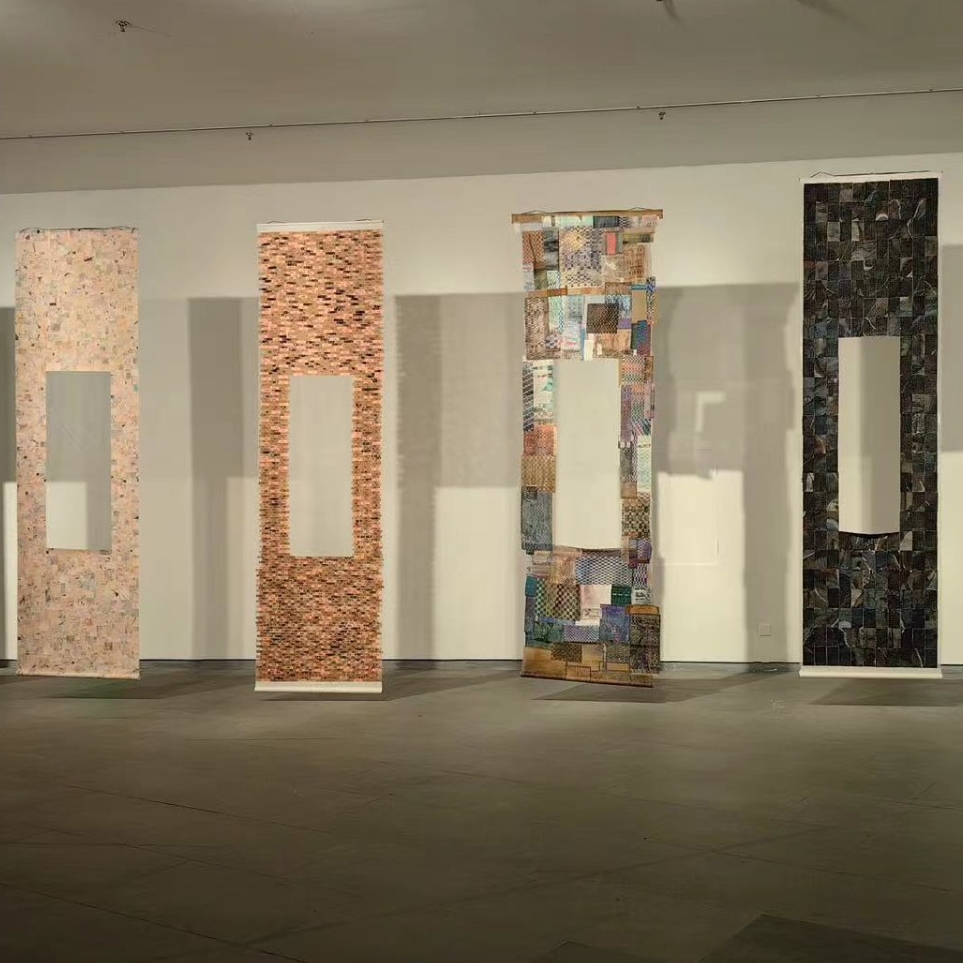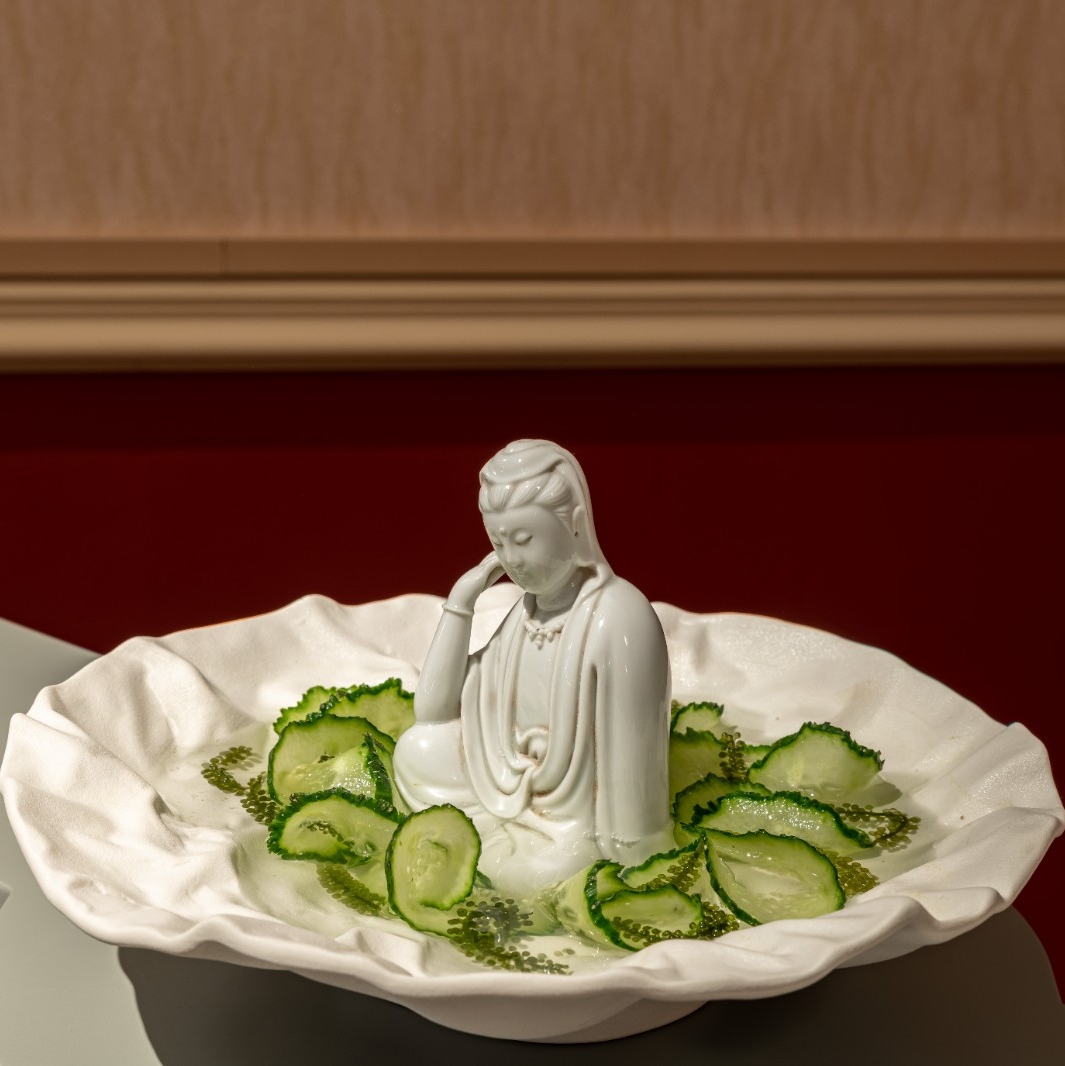Conservative and innovative; abstract and realistic; experiential and visual ... these opposing concepts are skillfully combined in artist Jizi's works to create an artistic experience that resonates strongly. In his ink paintings which can be described as landscapes, we cannot see the village trees and babbling streams of classical Chinese paintings. Instead, we are confronted with a grand cosmic spectacle of tumbling clouds, black swirls, and jagged ground. All these images bring the viewers into the wonderful spiritual world of the artist.


This past September, Shandong Art Museum held a large-scale retrospective of Jizi's ink art: "The Logos of Ink(Shuimo): Jizi’s Paintings", which was Jizi's 12th solo exhibition. When talking about the theme of this exhibition, curator Jia Tingfeng explained that the so-called "Dao of Ink (Mo Dao)", in his opinion, is the artist’s unique way of life. It is not a way to show his painting skill, but rather, the fundamental of life. Mo Dao is how he embodies the unity of heaven, earth, man and painting with his perseverance and artistic expression that is different from the traditional one. According to Jia Tingfeng, Jizi's life and his art are one and the same. He painted with his life, which is the essence of his art and what makes him respectable. On the panel of this exhibition, the academic host Chen Xiaoxin said that with his pursuit of ultimate spirit and his life's work, Jizi built his ink art kingdom with a metaphysical height and a unique connection between the spirit of heaven and earth, opening up a new thinking, a new image and a new realm of Chinese landscape painting. In this process, Jizi transcended his personal suffering and dark days. From ego to selflessness and from selflessness to superego, he realized the maximum meaning of his individual life.
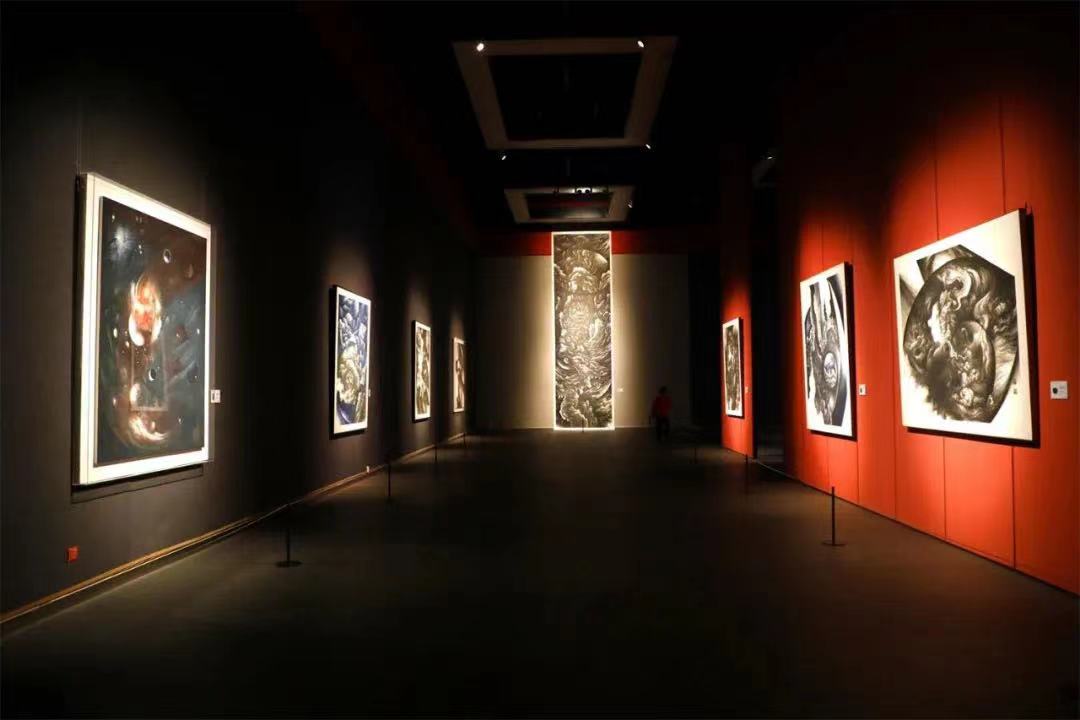
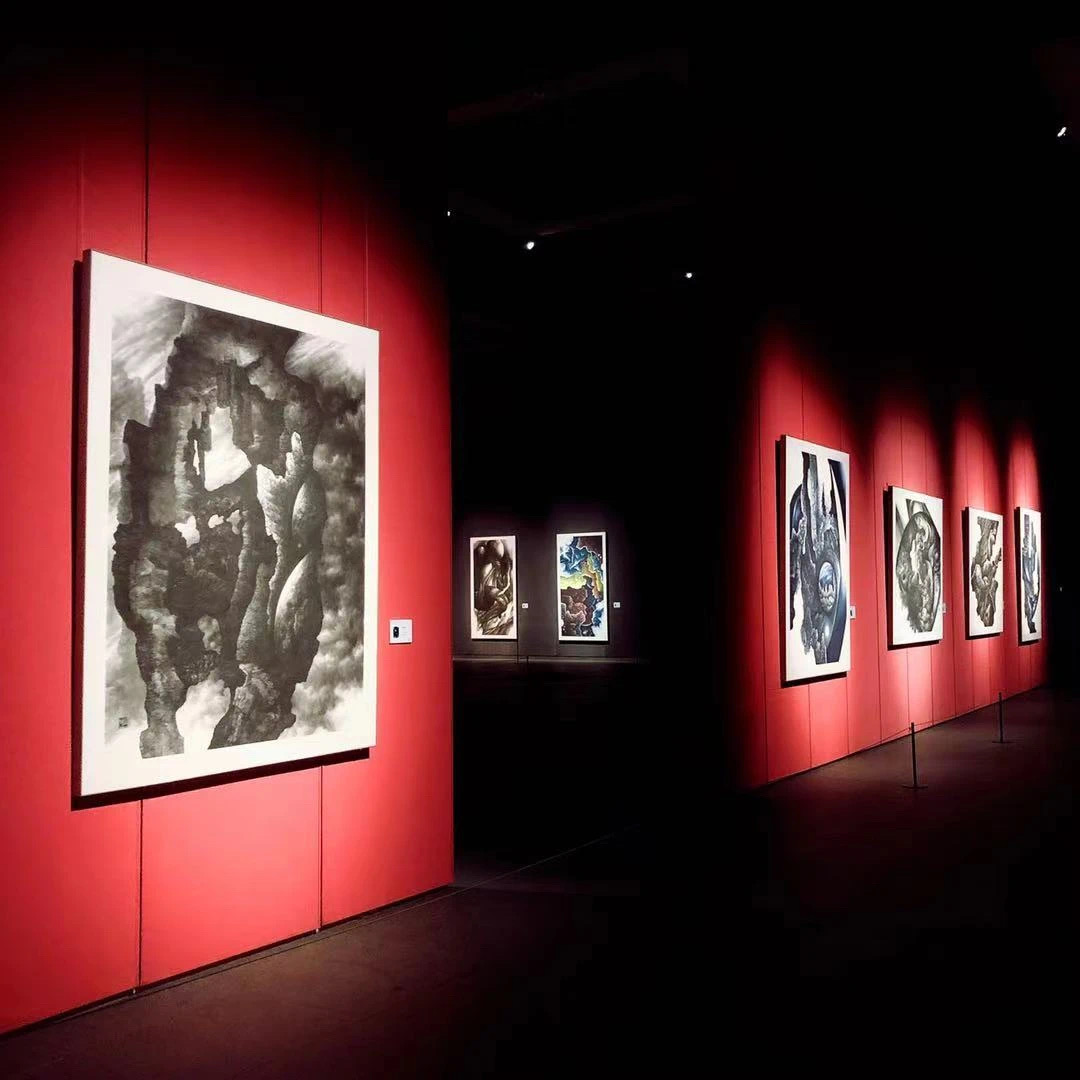

Exhibition View
Looking back at Jizi's artistic career, we can see the life track of an artist who sought inward and outward, and gradually became known to the world. Jizi, whose real name is Wang Yunshan, was born in Xuanhua, Hebei Province. In the 1950s, he was inspired by art at the local cultural center and began to soak himself in landscape painting in the late 1950s. Jizi is a self-taught artist, relying mainly on friends and old masters’ works to guide him. In the decades that followed, Jizi concentrated on his own style of painting, working hard and making little contact with the art circles then. While his contemporaries were busy looking for new forms and materials for artistic experimentation, Jizi took up the burden of revitalizing Chinese landscape painting and endeavored to bring "spirituality" back to traditional art. Just as Taoism calls for a connection between the universe and the self, Jizi drew inspiration from diverse sources to create works that provide a continuity between East and West painting traditions. As a result, his works combine the core of Chinese painting with a contemporary vision that is both traditional and accessible to contemporary audiences in the context of globalization.

Jizi and his family in 1970s
After 2000, Jizi, who was nearly 60 years old, began to live and paint in Beijing, and his paintings gradually became known. It was not until 2009, when Jizi's first solo exhibition was held in 798 art district, which was visited and discussed by many critics, curators and artists, that Jizi's works really began to enter the academia and public’s view. Since then, Jizi's works have been widely studied and praised by the art world at home and abroad. In addition to participating in many exhibitions and holding solo exhibitions in China, his works have also been exhibited in the United States, France, Italy, Germany, the United Kingdom, Korea, etc. In 2018, White Box art center in New York held the exhibition “The Journey of Spirit: Jizi” and the panel on Jizi’s art, which discussed “the significance of spirituality in contemporary art”. The senior curator of Asian Art of the Guggenheim Museum, Alexandra Munroe moderated the panel, where she shared her views on traditional Chinese painting and contemporary art, as well as discussed how the ink art connects with traditions and spirit. In her eyes, Jizi was one of many artists not only overlooked but simply not known in the Chinese art world of his time. Jizi himself was so indifferent to fame and wealth that he did not even show that much interest in being recognized by this huge academic structure that dominates the Chinese art world and especially the world of ink painting. But this did not affect his artistic achievements. On the contrary, the naturalness and purity of his art are even more precious in this era.


The panel on Jizi art at New York
Jizi's works have attracted the attention of many prominent art critics around the world: Danto, a renowned American art theorist, has described Jizi's works as a primitive scene of the cosmic world; the prestigious German publisher Springer has published a work by American scholar David Brubaker, Jizi and His Art in Contemporary China Unification in 2015; the first academic monograph on Jizi, The Logos of Ink, has been published and released in 2018. In 2020, Jizi's works were collected by the British Museum.
The charm of "Mo Dao" in Jizi's art was again fully unveiled in this past September at Shandong Art Museum. We had the chance to follow his journey of spirit as well as see his most amazing masterpiece - A 40 meter scroll titled The Great Scroll of Dao. Stretched across several walls, the work is almost cinematic in the way it presents an evolving narrative, starting with the ripples of calm waters soon turning into a scene of crashing waves. The waves beat upon cliffs and splash high into stormy clouds, finally resolving in a spectral sky. This work, which Jizi began to paint in the winter of 1994, was a summary of his exploration of art language since the mid-1980s. Jizi's artistic talent makes something as mystical as the origin of the universe become concrete and real.

The Great Scroll of Dao, Exhibition view
A sense of monumentality and religiosity is often perceived in Jizi's art. In some works, we can see a section of the Great Wall peeks out above the clouds, or some stalagmites-like forms, pushing forward from the ceiling and floors of an underground cave. In other works, we seem to be in outer space, pursing a glowing orb that could be the moon or just a hole in the night sky. All we need to do as viewers is to suspend our logical and aesthetic thinking and immerse ourselves in the fantasy world Jizi has constructed.

Jizi, Long Wind, 2011. Ink and color on paper, 193x337cm

Jizi, Sky Aura, 2009. Ink and color on paper, 195 × 184 cm Jizi, Between Sky and Earth, 2009. Ink and color on paper, 184 ×145 cm
Jizi, Between Sky and Earth, 2009. Ink and color on paper, 184 ×145 cm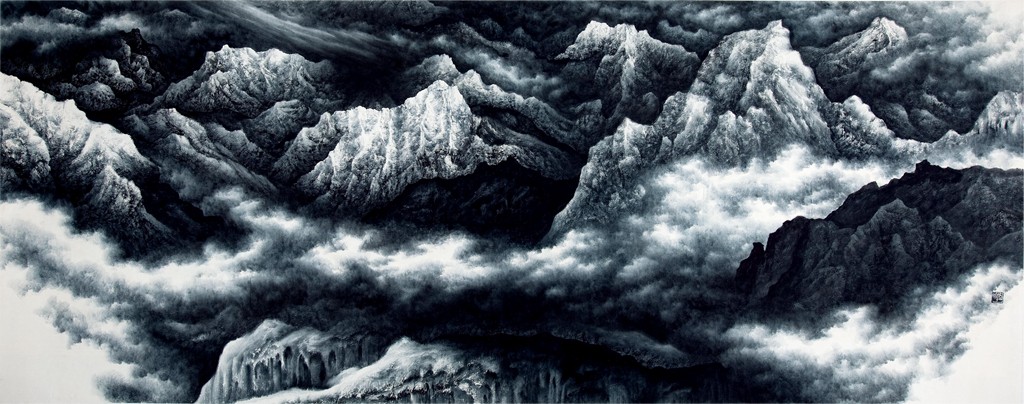
Jizi, Flying Snow No. 2, 2010. Ink and color on paper, 145 × 366 cm
Famous art critic and professor of CAFA Yin Shuangxi, shared his views on Jizi's art during the exhibition’s panel. In his opinion, Jizi's art creation is “inner seeking” and a kind of self-reflection in the anthropological sense. Taking the The Great Scroll of Dao as an example, the undulating mountains and gushing rivers eventually dissipate into a radiant sunlight with a sense of expansiveness, which represents Jizi’s acceptance and understanding of life. Rooted in Chinese art history and Eastern aesthetics, Jizi's art is rich in connotation, yet groundbreaking in content and expression. Can Jizi's works bring some inspiration to future artists? How can traditional ink paintings be transformed into modernity? These are some questions that remain to be discussed for a long time to come. But at least for now, Jizi's art needs to be protected and preserved, for his works have expanded the boundaries of Chinese landscape painting, enriched the meaning of "Neo Ink Art", and brought the wonders of the world beyond to us. It is his art talent that transcends differences and brings the universe closer to our home.
Photo Courtesy Shandong Art Museum.




